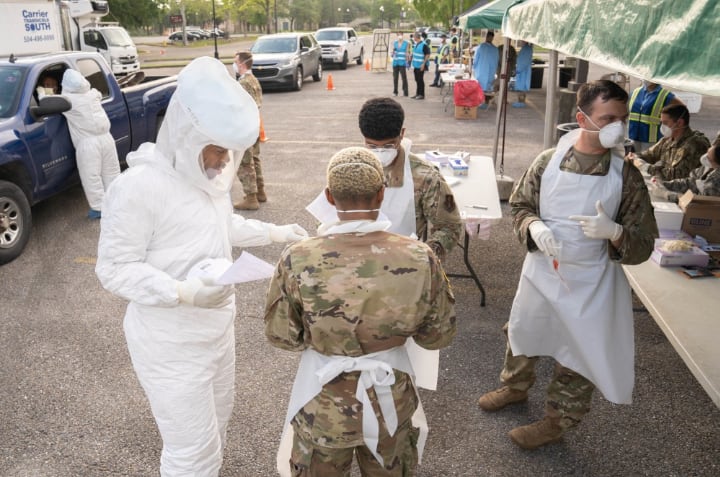More than a month into their mission to help cities and states stand up the space for thousands of extra hospital beds, the Army Corps of Engineers is gaining some time, its commander told reporters Friday.
Two weeks ago, Lt. Gen. Todd Semonite warned that mayors and governors needed to move quickly to get plans signed off and construction underway in order to have enough capacity to absorb their peak infection predictions, but it’s starting to look like some places aren’t going to get hit hard all at once, like they’d thought.
“We thought this would be a much steeper spike and straight down, so we didn’t think we’d have as much time,” Semonite said.
The day, or days, or reckoning appeared to be in late April, but that hasn’t happened everywhere.
“We pretty much thought that most of this was going to probably peak out … 24 April was kind of the day we were all worried about,” he said. “But now what we’re really seeing is so [many] different variations.”
But the time and money spent shouldn’t be considered wasted, he added.
“If you have hospital beds that never get used, I don’t think that’s a problem because you had the ability to be able to take care of the people from your city,” Semonite said.
Of nearly 1,200 requests for evaluation of potential sites, ACE has completed just under 1,100, according to their latest count. Many of those started out in big cities like New York, Denver, Chicago and Miami, but as the pandemic progresses, the localities preparing for a surge have spread out as well.
RELATED

St. Croix, in the U.S. Virgin Islands, is set to be one of the next projects.
“What happens on an island is a little bit different than what happens in an urban area,” Semonite said, as is what happens in a rural area.
Hawaii, Guam and Alaska are also preparing for their spikes, but now, government officials who were once asking for 1,500 new hospital beds are now considering something more like 500, he said.
As far as large cities, ACE has been helping the District of Columbia put together plans to refit its convention center, Semonite confirmed, with between 500 and 1,500 beds.
“Some of the curves were are seeing are clearly in May. We have a couple of these… that are actually in June right now,” Semonite said.
So far, there are 28 facilities with almost 16,000 beds either open for patients or in the construction process, in addition to seven in the contracting phase, 23 in the early stages of planning and another 41 that states have put together using ACE plans.
So far the Jacob K. Javits Convention Center in New York, the TCF convention center in Detroit and a 118-bed hotel in Florissant, Missouri, are fully operational.
Meghann Myers is the Pentagon bureau chief at Military Times. She covers operations, policy, personnel, leadership and other issues affecting service members.





